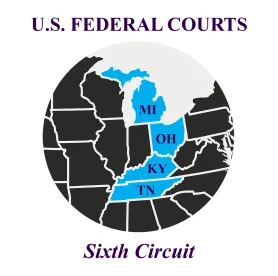The FCC’s ruling in In Re Amerifactors Fin. Grp., LLC, Decl. Ruling, CG Docket No. 02-278, CG Docket No. 05-338, DA 19-1247, 34 FCC Rcd 11950 (FCC Dec. 9, 2019) (“Amerifactors Ruling”) is starting to impact class certification in TCPA junk fax cases. As you may recall, in the Amerifactors Ruling, the Consumer and Governmental Affairs Bureau of the FCC ruled that “an online fax service that effectively receives faxes ‘sent as email over the Internet’ and [which] is not itself ‘equipment which has the capacity . . . to transcribe text or images (or both) from an electronic signal received over a regular telephone line onto paper’ is not a ‘telephone facsimile machine’ and thus falls outside the scope of the [TCPA’s] statutory prohibition.” Amerifactors Declaratory Ruling, 34 FCC Rcd at 1950-51 (¶ 3).
Earlier this week, in Advanced Rehab & Med. V. Holding, 2020 U.S. Dist. LEXIS 153181 (W.D. Tenn. Aug. 24, 2020), a district court gave Chevron deference to the Amerifactors Ruling and accordingly modified the class definition in a certified class to exclude any fax recipients who received fax(es) via an “online fax service.”
As an initial matter, the Court rejected the defendant’s argument that the Hobbs Act required application of the FCC’s Amerifactors Ruling to the class definition, quickly concluding that because the Amerifactors Rulings is currently on appeal to the full Commission, it is not a final order subject to the Hobbs Act.
The Court next determined whether Chevron deference applied, looking first at whether Congress has directly spoken to the precise question at issue and then if the statute is silent or ambiguous on the specific issue, whether the agency’s position is based on a permissible construction of the statute. As to the first inquiry, the Court found that the TCPA is silent on “online fax services.” “Congress did not define ‘equipment’ or any of the other terms used in the definition of a telephone facsimile machine, and the ordinary definitions of those terms do not shed light on whether an online fax service is included in that definition. Further, given that online fax services were not developed until after the enactment of the TCPA, the Court concludes that Congress has not directly spoken to the precise question at issue.”
With respect to the second step, the Court found that Section 227(b)(2) of the TCPA “broadly authorizes the Commission to ‘prescribe regulations to implement the requirements of [subsection (b)].’” In addition, the Court found that considering the interpretive method used in the Amerifactors Ruling, the nature of the question at issue, and the other factors discussed in Barnhart v. Walton, 535 U.S. 212, 221 (2002) leads to the conclusion that Congress delegated the necessary authority to the FCC to make the ruling in Amerifactors. As the Court noted, “[a]lthough its ruling was not published in the Federal Register, the interpretive method employed by the Bureau was far more formal than interpretations contained in opinion letters, policy statements, agency manuals and enforcement guidelines.” Moreover, the Court found that the Amerifactors Ruling was precisely the sort of interstitial question that favors deference to the agency’s interpretation, particularly because the issue involves a new means of communication.
The Court rejected Plaintiff’s effort to avoid Chevron deference, including the argument that the ruling is interpretive and lacks the force and effect of law. “This argument was rejected by the Sixth Circuit in Leyse v. Clear Channel Broad., Inc., where the court explained that ‘the key inquiry is whether Congress delegated the necessary authority, not whether the rule is termed interpretive or legislative.’” In addition, the Court disagreed with Plaintiff that the Amerifactors Ruling was inconsistent with earlier FCC rulings, but regardless, it rejected inconsistency among FCC rulings as a basis to avoid Chevron deference.
Finally, in concluding the Chevron analysis, the Court found that the Amerifactors Ruling was reasonable. The Court noted that the Bureau looked at the plain language of the statute and the characteristics of an online fax service. “Because the statutory definition of a telephone facsimile machine requires the equipment to have the capacity ‘to transcribe text or images (or both) . . . onto paper,’ 47 U.S.C. § 227(a)(3), the Bureau concluded that online fax services do not fall within the TCPA’s definition of a telephone facsimile machine but instead ‘are more accurately characterized as faxes sent to a “computer” or “other device.”’ Amerifactors Ruling, 34 FCC Rcd. at 11953 ¶ 11, 11954 ¶ 13.”
Notably, the Court here has already certified a class, but it agreed to modify the class definition to exclude class members who received a fax via an online fax service. The ruling begs the question of how does one figure out whether a class member received his/her fax online versus a standalone printer. This sounds like an individual question of fact that will require a mini-trial to answer, raising the question of whether the class is subject to decertification. Stay tuned.




 />i
/>i

